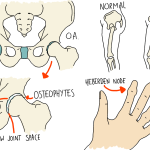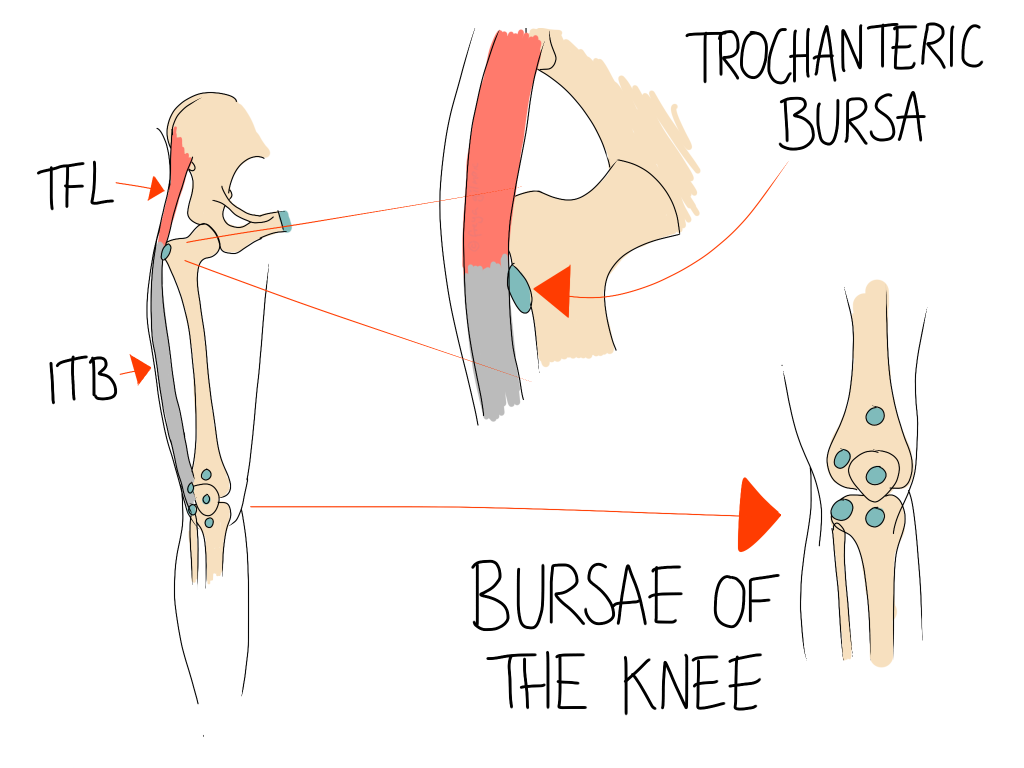Tension is a problem that affects us all to some extent, and often it has mechanical implications within the body. Stress changes the gear your nervous system runs in, making digestion less of a priority and breathing less efficient. These changes in turn can have a knock-on effect on the rest of the body, so they’re definitely worth addressing, even if the stress itself is an inevitable part of your current situation. Sometimes the patterns are difficult to spot, as the root cause is asymptomatic- this is often the case with the upper back (the thoracic spine).
What is the Thorax?
The spine is divided into the cervical (neck), thoracic (upper), and lumbar (lower) vertebrae. Below the lumbar spine there is also the sacrum. The three areas are all slightly different, but the easiest way to tell them apart is by looking for ribs. All of the thoracic vertebrae have ribs (typically). Everything above without ribs is cervical, and everything below is lumbar. There are anomalies- some people have an extra rib at the base of the neck, which can be associated with thoracic outlet syndrome. Apart from the ribs, the three areas have different curves. The thoracic spine is kyphotic, not lordotic, and it is much less likely to develop a disc bulge than the neck or lower back.
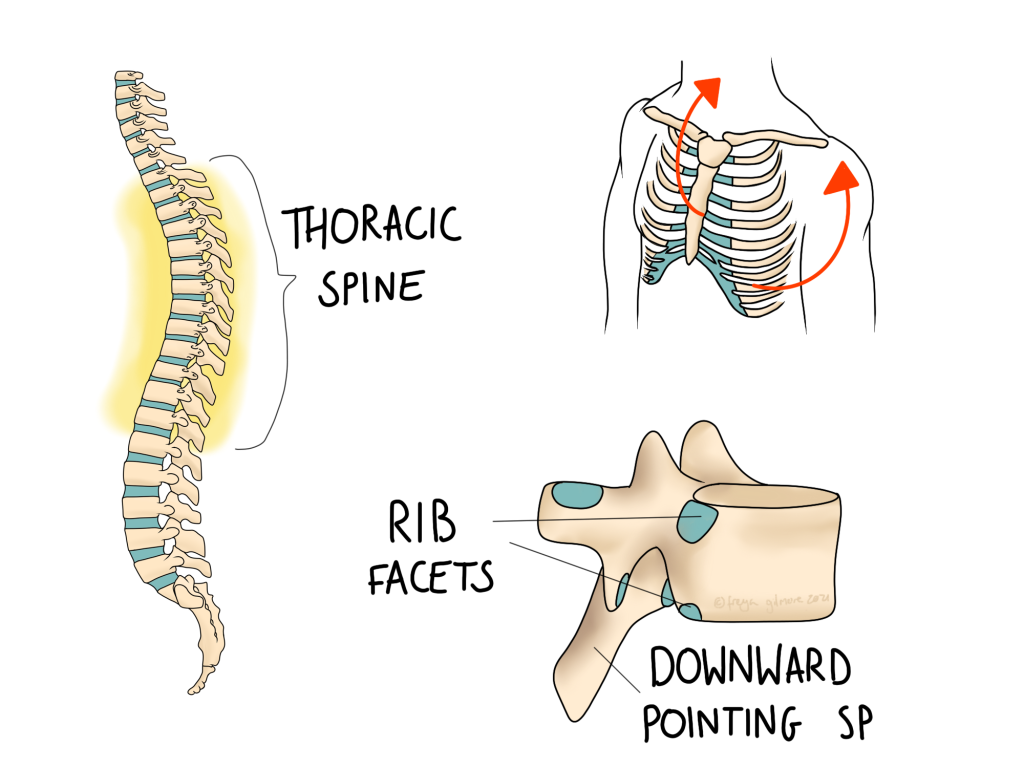
The different areas have different demands. Lumbar vertebrae are strong with large joints for weight bearing. Their shape allows them to extend easily. Cervical vertebrae are smaller and more mobile, particularly good for rotation. Thoracic vertebrae are limited by the ribs, but also by the shape of the spinous process (SP). This is the bit of the bone that sticks out at the back: the only bit you can feel from the outside. Whereas the other areas have SPs that project relatively straight back, the thoracic ones point down. This limits extension, which is already minimal because of the natural kyphosis.
Breathing: Normal vs Tension
Whereas the abdomen is full of a range of organs, the thorax is home to just the heart and lungs. Other vessels and the like pass through and are affected, but not as much as breathing.
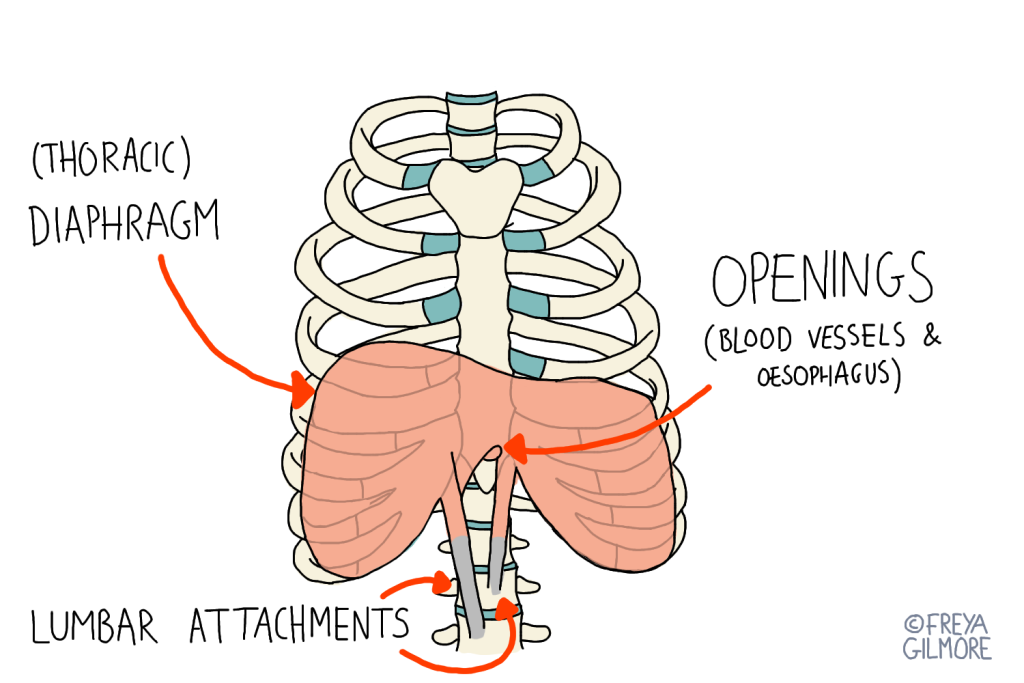
For patients who have asthma, there may be additional restriction in the thoracic spine and tension in the soft tissues.
Anxiety and stress can play a significant role too. The fight or flight response is great at getting us out of danger in the short term, but has negative effects when engaged for too long. In short, the response has a handful of effects:
- Divert blood away from the digestive system
- Increase blood flow to muscles
- Increase heart rate and breathing
- Produce more cortisol
Muscles Involved in Breathing
The effects on the diaphragm and other breathing muscles are multiple. The changes in digestion can cause abdominal discomfort or IBS, which encourages us to scrunch up. The diaphragm has to work harder against this pressure, and may become relatively tight as a result. When the diaphragm is inefficient, the accessory muscles of breathing are recruited. These muscles are smaller and less powerful, so have to work harder. They soon become tight too, pulling on the shoulders and neck. Tension in the neck can cause headaches, as well as problems with the jaw. In fact, jaw problems can refer pain into the side of the head. Sometimes people describe this as “a pain in my head, but not a headache”. If this resonates with you, we might be able to help.
The Diaphragm and Reflux
Anecdotally, I have found that tension in the diaphragm is associated with a range of unusual aches and pains. When a patient presents with pains that come and go in various spots around the thorax, I check the diaphragm. Like problems with the jaw, sometimes we get lucky and resolve the symptoms with only a few minutes of work on the muscle. Exercises to keep the diaphragm working well are important to keep hold of the progress.
We also know that the diaphragm works as an “anti reflux barrier“. When it’s working well, it supports the sphincter at the top of the stomach, preventing the upward flow of stomach acid. If it is tight or otherwise dysfunctional, it can be a factor in developing or worsening acid reflux.
Other Causes of Diaphragm Tension
Identifying the cause of the tension is a good place to start- it’s not always simply stress. A hunched posture can create uneven forces through the spine and ribcage, but the biggest effects come from breathing. When you breathe in, your abdomen should come out, as the diaphragm pushes your organs down to give more space to the lungs. Asthma, tight clothes (including elastic or corset-type shapewear), being self conscious of having a tummy, and stress can all consciously or subconsciously lead to an abdomen that doesn’t extend- thus paving the way for a diaphragm that gets tight. If the lungs can’t expand down, the shoulders are probably going to have to work harder to try and let them expand up. This is known as upper rib breathing, and starts to explain where those strange upper back and shoulder pains come from.
Managing Tension with Breathing and Osteopathy
The extreme version of this stressful breathing is known as backwards breathing. Essentially, this is when the abdomen does the exact opposite of the ideal movement mentioned above. On breathing in, the abdomen pulls in too, minimising lung capacity and recruiting accessory muscles of breathing that shouldn’t be engaged for long at all. It can be useful, and is utilised in some forms of yoga, but as a default setting it won’t do any good!
An unhappy diaphragm will often respond quickly to direct osteopathic techniques and breathing exercises. I’ve had a handful of patients with a selection of upper back, shoulder, and diaphragm pains that have been almost 100% better after the first treatment and some box breathing.
The “box” in box breathing is a visual tool to help keep the exercise slow and balanced. Each side represents a stage of the exercise, and as you can see in the diagram below, all four stages last the same length of time.
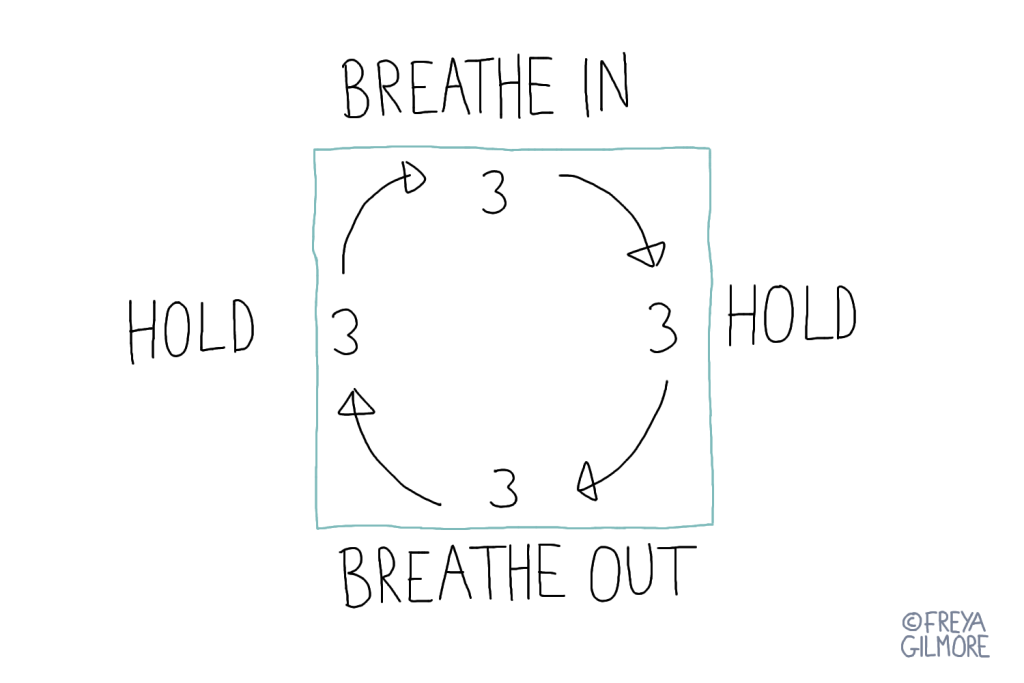
The Thorax and Lumbar Spine
Particularly for patients with bulging discs, we want to get to the root of the problem. When a disc is irritated, it is often overloaded, so the problem does not lie completely within the affected area. Stiffness in the upper back is a common finding in people whose discs are causing them problems.
Although movement in the thorax is not extreme, there are a lot of joints within the area. If a handful of them are stiff, you begin to ask a lot more of the joints elsewhere that are working well. This can be a factor in overloading a segment and developing a disc bulge. The onset is often seemingly benign, often the patient is leaning forward to pick something up, and feels the pain before they’ve reached the object. In the early days it can be too uncomfortable to tolerate treatment in the lower back. It might also be detrimental, as local inflammation and muscular tightness need time to settle. Treating the upper back can take the strain of the symptomatic area with minimal discomfort.
If your upper back is causing you problems, you can book an appointment with me here. I am currently working in Buckingham (Bucks) and Shefford (Beds).

